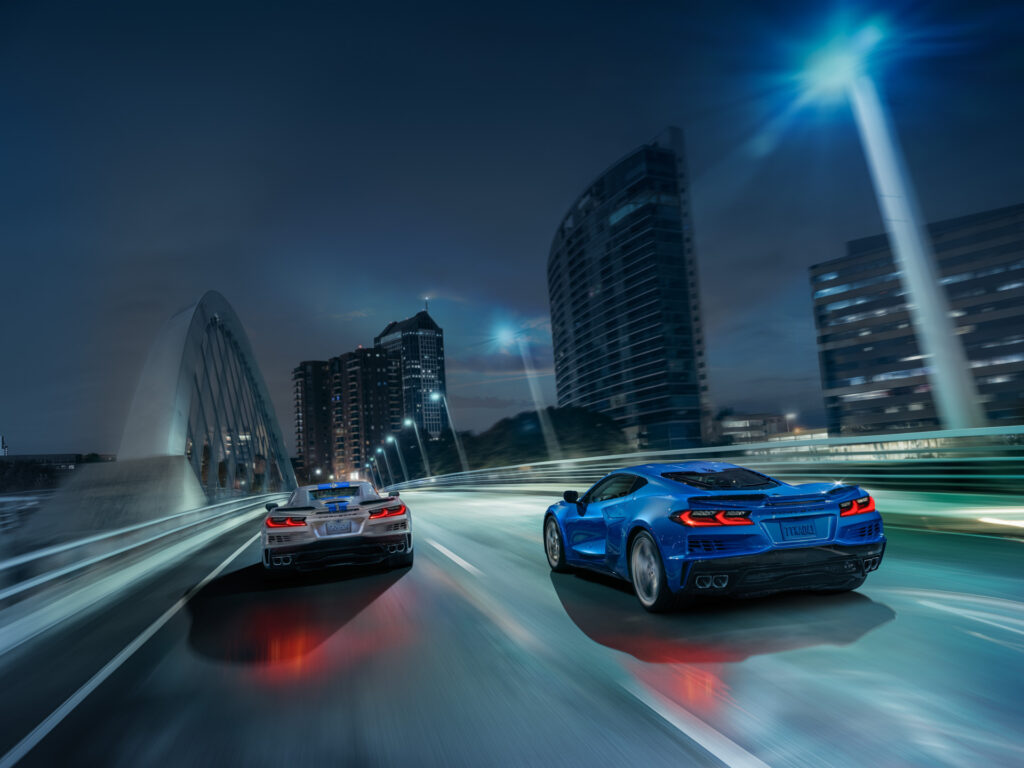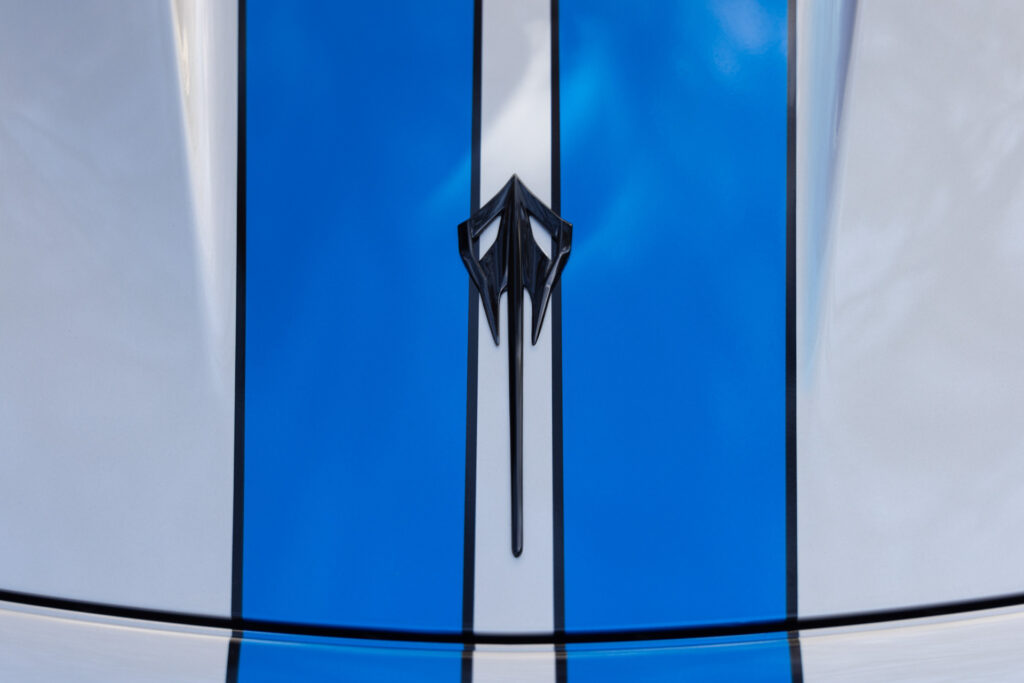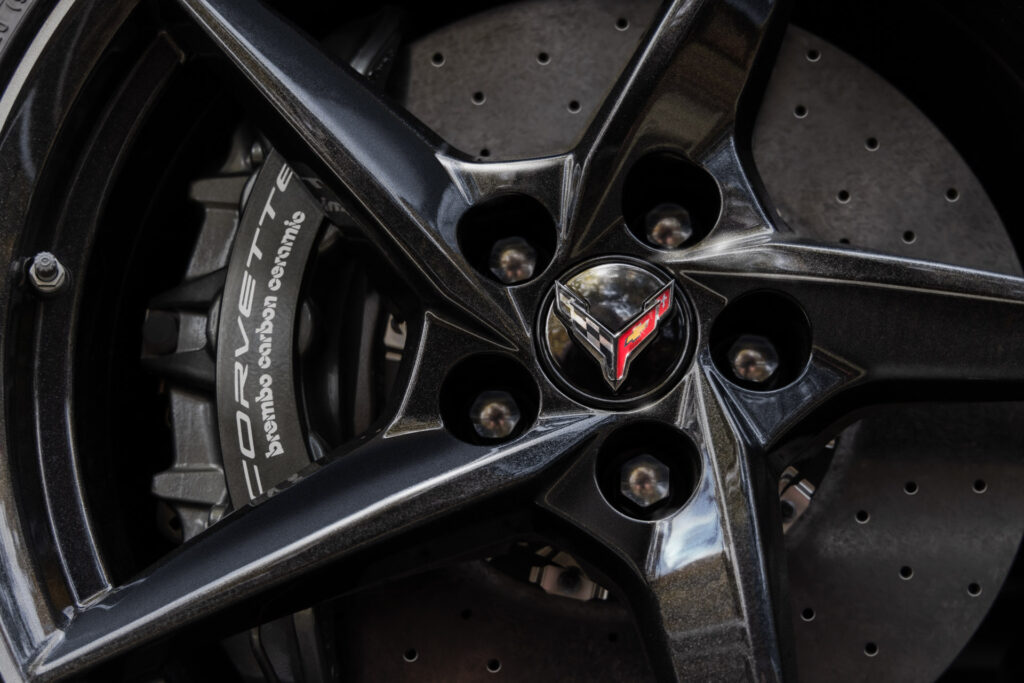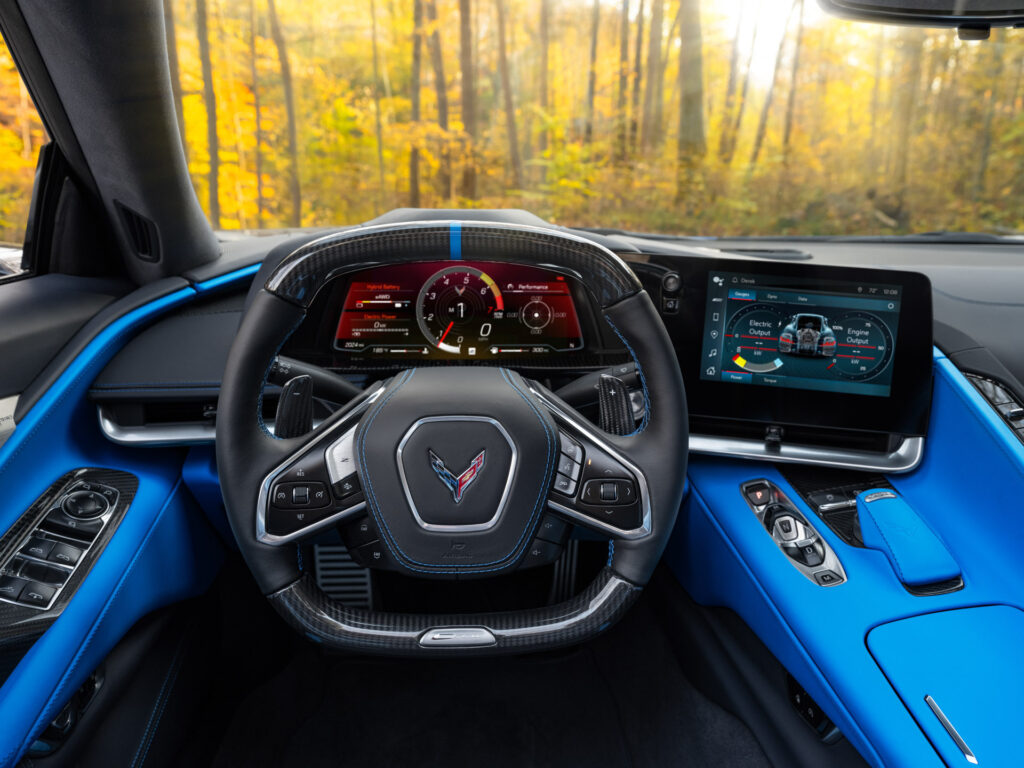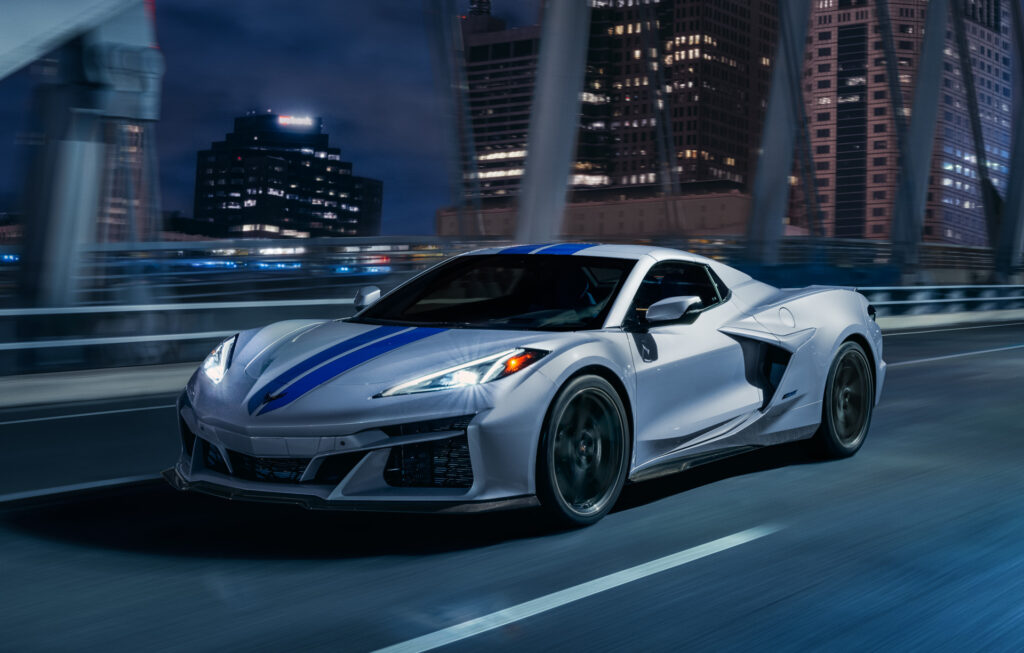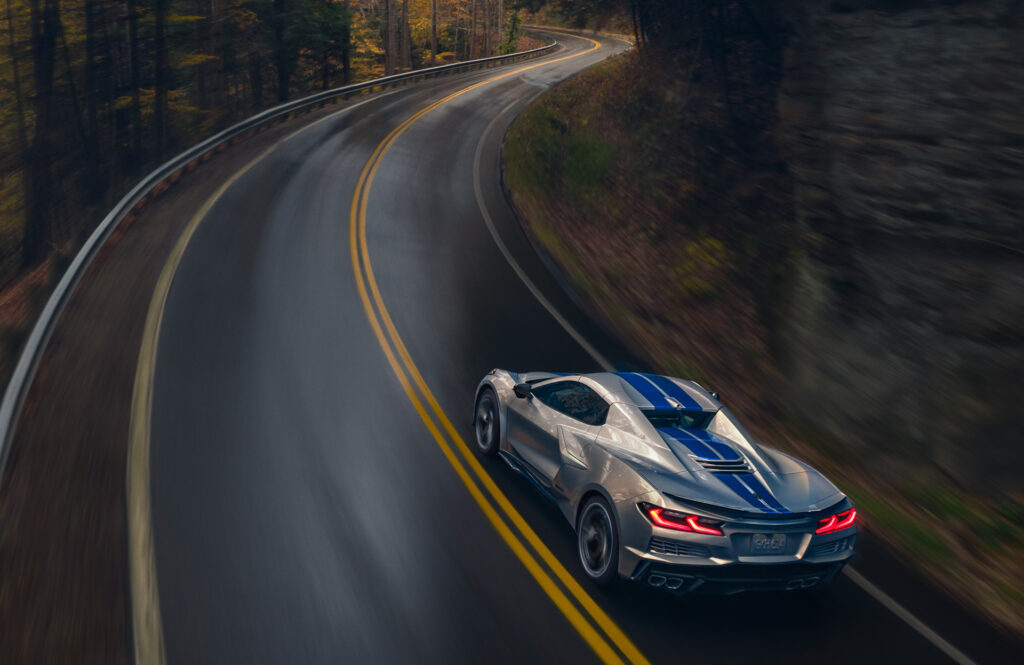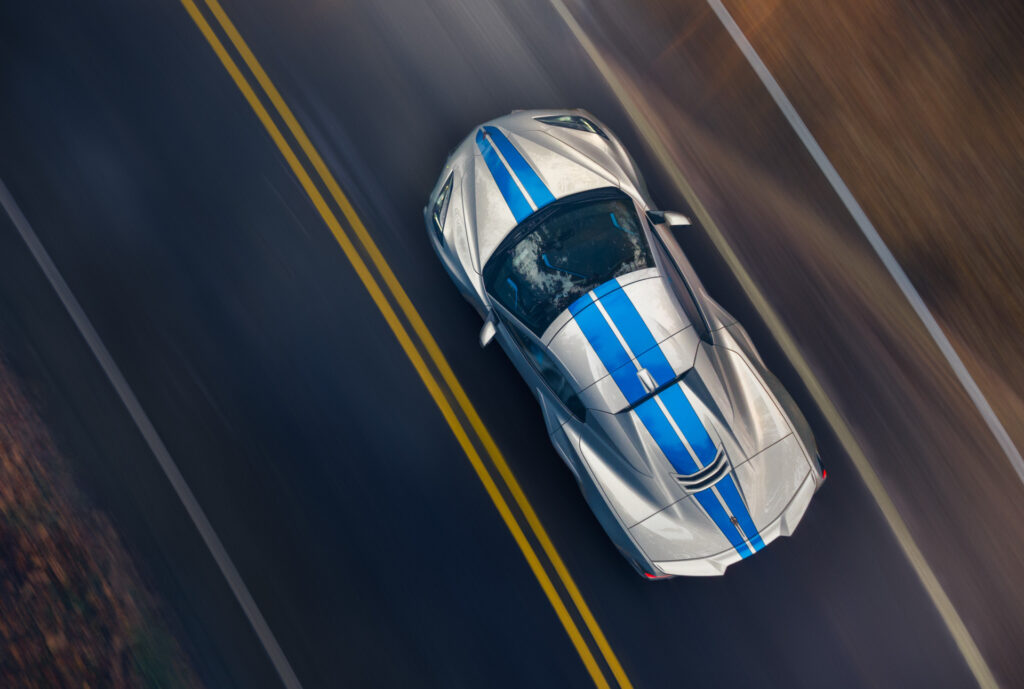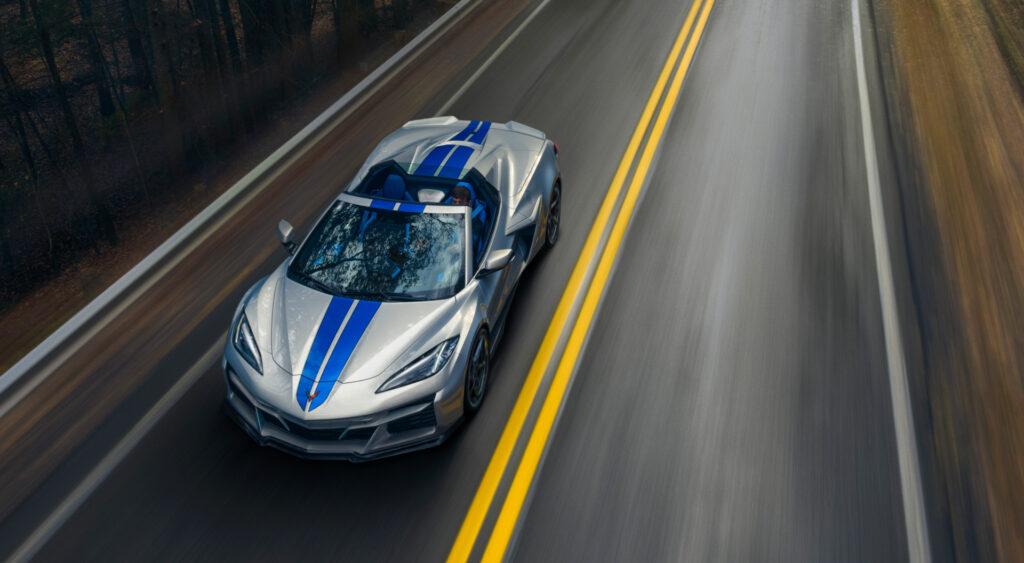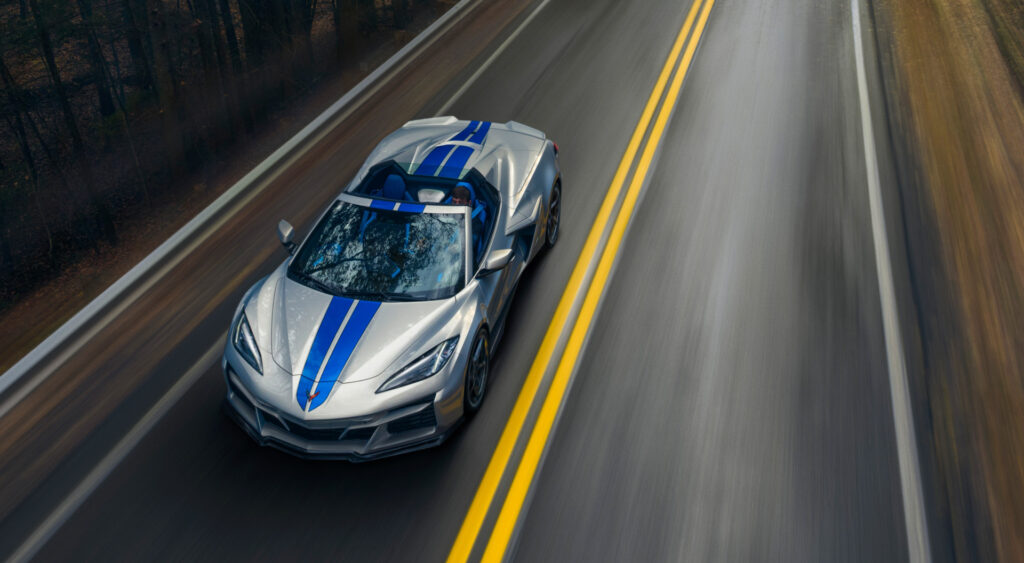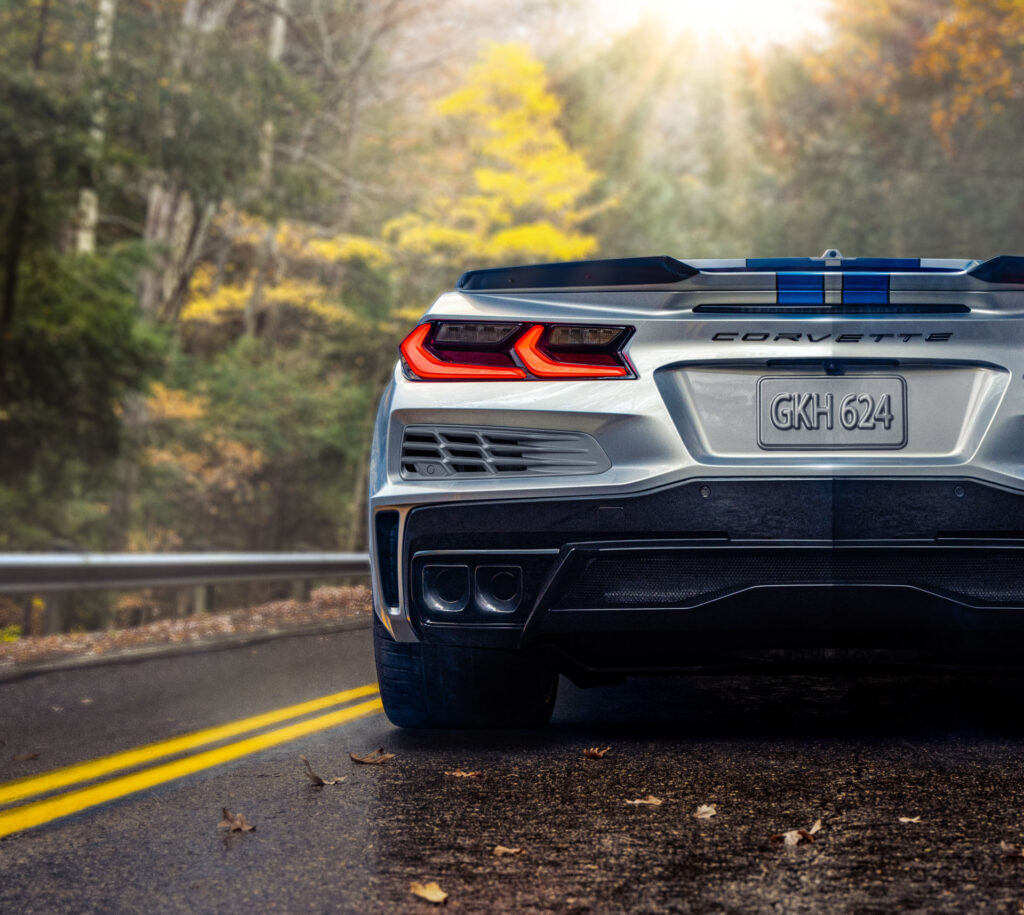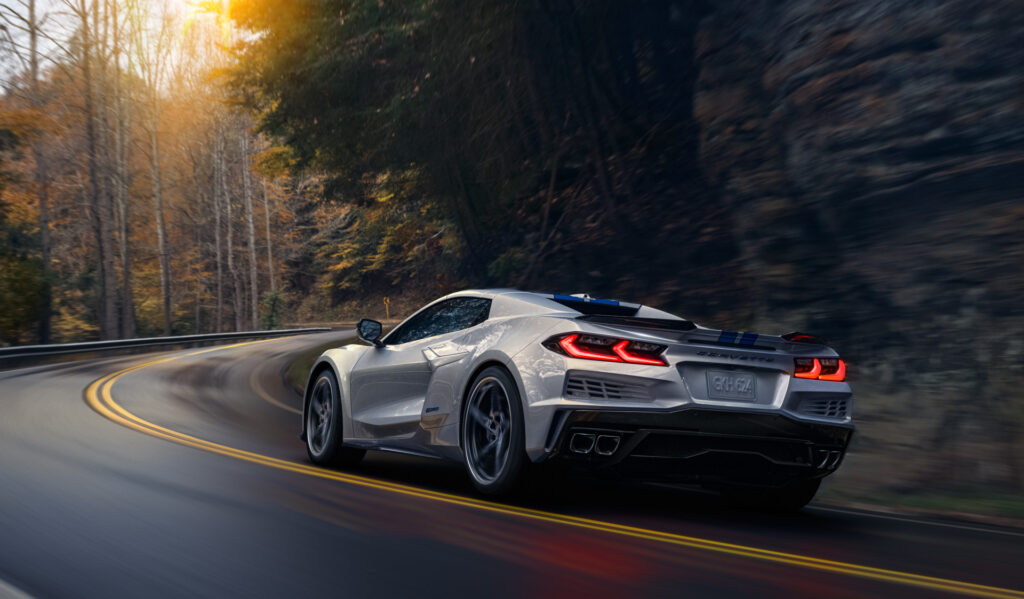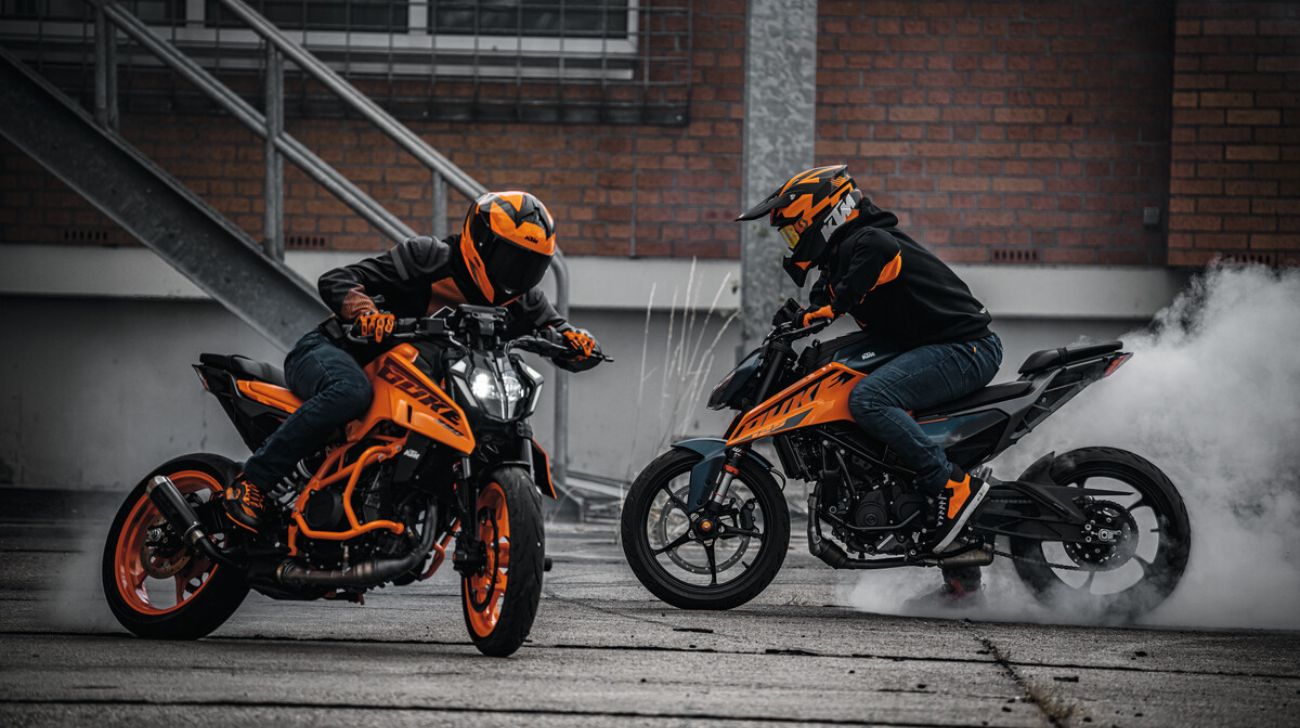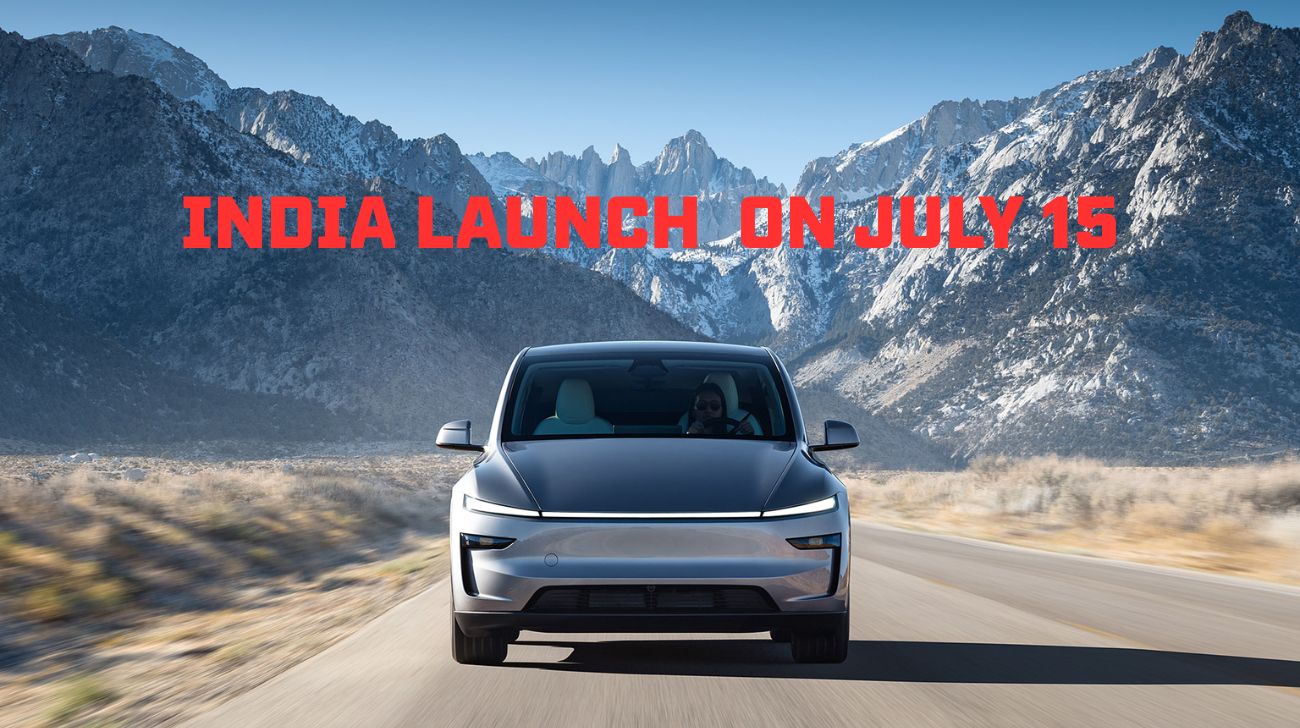The fastest Corvette ever, the 2024 E-Ray AWD Hybrid, accelerates to 60 mph in 2.5 seconds.
Although the rear axle receives 495 horsepower from an LT2 V8 and the front axle receives 160 hp from an electric motor, there is no plug-in facility.
Effects of Transition
The Corvette's transition to a mid-engine design in 2020 was just the first step in a new path. The second was making the Z06 a legitimate supercar contender, and now we finally got a good look at the third. This is the 2024 Corvette E-Ray, a fresh take on the C8-generation automobile that adds hybrid power and all-wheel drive to the model lineup, adding two more lines to the Vette's résumé.
The E-Ray is a new Corvette model that fits into the lineup similarly to how the Turbo fits into the 911's, precisely 70 years after the original C1 made its premiere at Motorama in New York City. With a combined output of 655 horsepower, the E-Ray provides easy performance and all-weather security if the base C8 Stingray is a Carrera and the Z06 shares the GT3's love of rpm. Additionally, it comes in both coupe and convertible versions, much like every previous Corvette.
Costing $104,295 instead of the regular C8's $64,500, the Corvette E-Ray offers high-rolling Corvette enthusiasts a tempting option between the two top models, each of which has advantages and disadvantages equal to or greater than the other. The E-Ray reduces the Z's dry-weather zero to 60 mph (97 km/h) time from 2.6 to 2.5 seconds and would essentially leave it standing on a wet road - while the entry-level V8 was only considering starting its 2.9-second run. The 670 hp (661 PS) Z06 makes 15 hp (15 PS) more and pulls 1.22 g versus 1.1g in corners. The quarter mile remains the same, with the E-Ray crushing it in 10.5 seconds, a tenth faster than the Z06.
Although the E-Ray shares elements of the Z06's aesthetic cues visually, such as its 3.6-inch (91 mm) bigger body and longer, skinnier rear air vents, it is more similar to the Stingray overall due to its shared quad exhaust layout. This is due to the fact that the E-Ray uses the 6.2-liter pushrod LT2 engine from the basic model rather than the 5.5-liter flat-plane crank, rev-happy LT6 V8 found in the Z06 instead. It has the same 495 horsepower (502 PS) and 470 lb-ft (637 Nm) and uses an eight-speed dual-clutch gearbox to drive the rear wheels.
The single electric motor mounted on the front axle makes a difference. It draws power from a battery underneath the center tunnel and delivers 160 horsepower (162 PS) and 125 lb-ft (170 Nm) to the front wheels, occasionally allowing the E-Ray to run entirely on electricity. Yes, this is the first front-wheel-drive Corvette ever made.
No Cables to Attach
It isn't a PHEV, though. The 296 and Artura from Ferrari and McLaren are both plug-in vehicles, while the Corvette team has chosen a more conventional hybrid that depends on regenerative braking and extra engine power to recharge its battery.
The drawback of such a choice is that you can't travel the length of a city on electric power, which might become increasingly important in the future if cities start outlawing combustion cars. When you have a 5 AM appointment with a canyon road, a Stealth Mode does enable you to crawl away from your home on electric power at speeds of up to 45 mph (72 km/h), but considering the battery's modest 1.9 kWh capacity, we estimate you'll be lucky to get a few miles of EV running out of it. Nevertheless, Chevrolet asserts that they fine-tuned the new E-electric Ray's motor to increase the amount of time the V8 can operate on half of its cylinders while under low-load conditions.
Positively, skipping the PHEV path theoretically reduces weight and money, but it should come as no surprise that the E-Ray is still the heaviest Corvette you can purchase. The electric engine and battery pack simply add a stack of fat and lower the baggage capacity by 0.2 cu-ft (2 liters). Chevy estimates the dry weight of the E-Ray coupe to be 3,774 lbs (1,712 kg), compared to the Z06's 3,434 lbs (1,561 kg) and the standard C8's 3,366 lbs (1,530 kg). A desire for an E-Ray Cabrio That will cost you an additional 82 pounds (37 kg). And keep in mind that they are dry weights. At the curb, an E-Ray will almost probably weigh over 4,000 pounds (1,814 kg).
Carbon Ceramic basics
Although the Corvette team specified a lightweight carbon ceramic Brembo brake kit to guarantee the quickest factory Corvette ever had the stopping power to match its speed, it still happened. Other chassis niceties include wheels that employ the Z06-spec broad fenders and standard Magnetic Ride Control 4.0 dampers with three settings.
Along with the significant use of color coding and broader body, those wheels, which have a twisted five-spoke design that is unique to the E-Ray, will help you distinguish one from a Stingray as it passes you on the street. Additional choices include carbon wheels, two carbon trim kits, 14 exterior colors, and an Artemis Dipped green inside trim that will only be offered on 2024 Corvettes. The full-body Electric Blue stripe package is another E-Ray-only feature.

